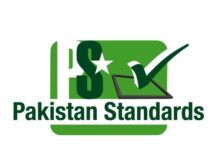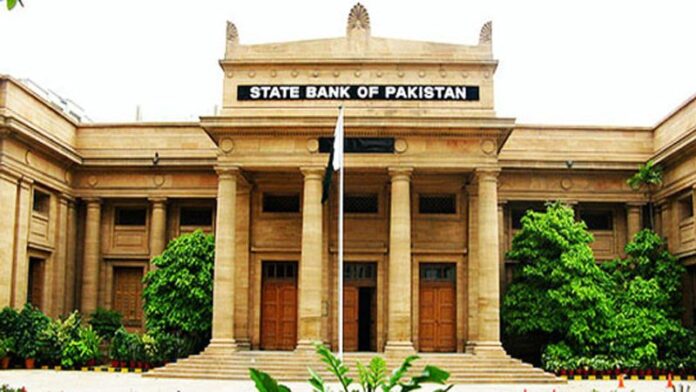D-SIBs designation announced for 2023
The State Bank designated United Bank Limited, Habib Bank Limited and National Bank of Pakistan as D-SIBs (Domestic Systemically Important Banks) for 2023. These designations are given under the Framework for D-SIBs which have been notified since April 2018. The SBP adopted this framework after they were implemented on a global scale after the Global Financial Crisis of 2008. The crisis taking place in 2008 highlighted the importance of having enhanced supervision over certain financial institutions which had a greater involvement in the global economy. Due to their size and outreach, it was seen that as a financial institution collapses, they can pose a greater risk to the economy as well. In light of this, standards were developed and supervisors were tasked to review the frameworks and policies that were applicable to financial institutions operating around the world. By having measures and audits in place, the stability of the financial system could be safeguarded. “I think proper identification and monitoring of D-SIBs is a good step to reduce risk of failure of such large banks and consequent impact on the economy” says Asad Ali Shah, ex-senior partner at Deloitte Yousuf Adil.
Framework developed by SBP
The framework that has been developed by SBP is based on the best practices developed by Basel Committee of Banking Supervision (BCBS) in order to determine the designation and supervision of certain banks that it qualifies as D-SIBs. The framework allows methodology and identification of D-SIBs that have to adhere to an enhanced regulatory and supervisory regime. These designations are awarded to banks which have the potential to absorb a higher amount of losses and can manage additional supervisory conditions placed on them. Once these conditions are adhered to, these banks have resilience to any sort of shocks. This allows them to develop risk management abilities which helps it counter the impact of any shocks spilling into the economy. Banks are scored on a composite basis in terms of their size, substitutability, complexity and interconnectedness as these can have a ripple effect in case the financial institution defaults. “It is good to see that SBP, which is a relatively good regulator, is implementing this policy which is a global best practice” says Uzair Aqeel, a partner at London-based Nairang Capital.
Even though this designation proves to be a seal of approval for the banks themselves, it can also place additional burden on the banks who have to post additional capital requirements while also enhancing their supervisory requirements. Based on the framework, NBP has been placed in Bucket D of the Common Equity Tier-1 (CET-1) which means they have to post an additional 2.5% in capital while HBL and UBL are placed in Bucket C and Bucket A requiring 1.5% and 0.5% of additional capital respectively. SBP also places branches of Global Systemically Important Banks (G-SIBs) operating in Pakistan under its purview and requires them to hold additional CET-1 capital base as well but in this review no such bank was identified for designation.
Impact on economy
The announcement that has been made is in line with SBP’s role as the regulator of the banking industry of the country and looks to make sure that the banks are adhering to international standards of compliance. Meeting these guidelines means that the central bank is able to look after the health of the economy and make sure banks are not jeopardizing the state of the economy. The regulator ensures that the economy does not fall prey to the profit maximization motive of the banks themselves. Mr. Aqeel states that these are “prudent measures that are still relatively new. They have basically zero impact on anything” as banks in Pakistan are well-capitalised and profitable. Their business is low risk and this announcement will have zero real world application.
Context of the framework
This framework was developed as a mechanism by the regulatory bodies around the world in the wake of the Global Financial Crisis of 2008 where it was seen that large financial institutions can grow in size and influence to such an extent that they can create collateral damage in the economy. Initially these standards were developed on the global scale to protect global economies from such a contagion but then it was felt that there was a need to have domestic standards to protect the domestic economy and financial stability of the country. Once a sample of banks is identified having more than 3% of Pakistan GDP in its asset base, the banks are then tested in terms of their size, interconnectedness, complexity and substitutability. The purpose of this framework is to make sure that banks are building an inherent stability within their own balance sheets to protect the financial system from any additional risk they can pose due to their size and operations. Once it is felt that they are becoming too big to create a risk of stability within a financial system, they have to raise additional equity in order to make sure there is a buffer in case a shock takes place.
Financial Performance of the banks
A quick review of the annual statements from each of the three banks shows that the financial health of these companies is getting better and the trend seems to be consistent throughout the industry. With interest rates touching an all time high, the spreads being earned by the banks are unprecedented and with future tightening of monetary policy, these spreads are expected to grow further. Once the equity base is increased in line with the SBP guidelines, these companies can expect to earn further once they bring their CET-1 adequacy in compliance. The asset bases of the three banks make up around 12% of the country’s GDP and 35% of the deposit. The growth in EPS and dividends has been strong which shows that these banks are going from strength to strength. Based on the breakup values, the equity base of the banks is also strong and the common stock covering the CET-1 adequacy of the banks is also relatively high. Higher capital adequacy is the goal of designating these banks as D-SIBs and the banks that have been announced will be able to use their financial strength to build capital for compliance states Mr. Shah. He further adds that internal control adopted by the banks themselves and SBP oversight and inspection ensures that banks stay compliant to the guidelines set.
| Metric | HBL | NBP | UBL |
| Asset Base | 4.6 tln | 5.2 tln | 2.8 tln |
| Deposit Base | 3.5 tln | 2.7 tln | 1.8 tln |
| EPS | 23.2 | 14.3 | 26.19 |
| Dividend | 6.8 | – | 22 |
| Breakup Value | 194.3 | 141.4 | 170.74 |
| CET-1 Adequacy | 10.79% | 16.3% | 14.41% |

























How I Got My Blank Atm Card And Became Wealthy…
My husband and I are here to testify about how we use Dark Web blank atm card to make money and also have our own business today. Go get your blank atm card today and be among the lucky ones. This programmed blank atm card is capable of hacking into any atm machine, anywhere in the world. It has really changed our life for good and now we can say we are rich and we can never be poor again. You can withdraw the maximum of $ 2,500 daily We can proudly say our business is doing fine and is not illegal to me, there is no risk of being caught because it has been programmed in such a way that it is not traceable, it also has a technique that makes it impossible for the CCTV to detect you.. For details and cost on how to get yours today, email the hackers on: darkwebonlinehackers (@) gmail (.) com or WhatsApp: +18033921735